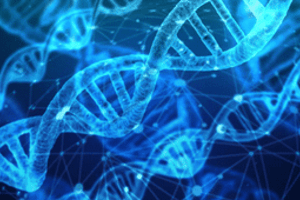Podcast
Questions and Answers
Which of the following is NOT a type of DNA damage?
Which of the following is NOT a type of DNA damage?
- Single-strand breaks
- Thymine dimer formation
- Base excision (correct)
- Double-strand breaks
What is the primary cause of DNA damage?
What is the primary cause of DNA damage?
- Genetic mutations
- Replication errors
- UV radiation
- Chemical exposure (correct)
Which repair mechanism is responsible for fixing DNA damage caused by UV radiation?
Which repair mechanism is responsible for fixing DNA damage caused by UV radiation?
- Non-homologous end joining
- Homologous recombination
- Nucleotide excision repair (correct)
- Mismatch repair
What are the different types of DNA damage?
What are the different types of DNA damage?
Explain the process of nucleotide excision repair.
Explain the process of nucleotide excision repair.
What are the consequences of inefficient DNA repair mechanisms?
What are the consequences of inefficient DNA repair mechanisms?
Flashcards are hidden until you start studying
Study Notes
DNA Damage and Repair
- Not a type of DNA damage: Gene expression, which is the process by which the information encoded in a gene is converted into a functional product.
- Primary cause of DNA damage: Reactive oxygen species (ROS), which are highly reactive molecules that can alter the chemical structure of DNA.
- Repair mechanism for UV radiation damage: Nucleotide excision repair (NER), which is a process that removes damaged DNA segments and replaces them with correct nucleotides.
Types of DNA Damage
- Point mutations: Changes in a single nucleotide base pair, which can affect the genetic code.
- Frameshift mutations: Insertions or deletions of nucleotides that alter the reading frame of the genetic code.
- Cross-links: Covalent bonds between DNA and other molecules, which can inhibit DNA replication and transcription.
- Double-strand breaks: Breaks in both strands of the DNA double helix, which can lead to genetic instability.
Nucleotide Excision Repair (NER)
- Step 1: Damage recognition: Proteins recognize and bind to DNA damage, such as UV-induced lesions.
- Step 2: Unwinding: The DNA double helix is unwound to create a replication fork.
- Step 3: Incision: An enzyme cuts the DNA strand on both sides of the damage, creating a gap.
- Step 4: Repair synthesis: The gap is filled with correct nucleotides by an enzyme called DNA polymerase.
- Step 5: Ligation: The ends of the repaired DNA are sealed by an enzyme called DNA ligase.
Consequences of Inefficient DNA Repair
- Genomic instability: Inefficient DNA repair can lead to the accumulation of mutations, which can result in genetic instability.
- Cancer: Defects in DNA repair mechanisms can contribute to the development of cancer.
- Aging: Inefficient DNA repair can lead to the accumulation of DNA damage, which can contribute to the aging process.
Studying That Suits You
Use AI to generate personalized quizzes and flashcards to suit your learning preferences.




